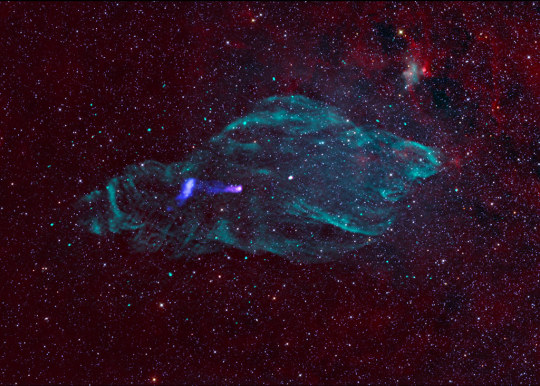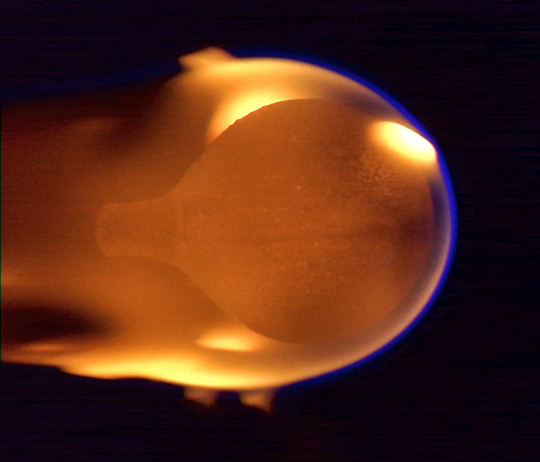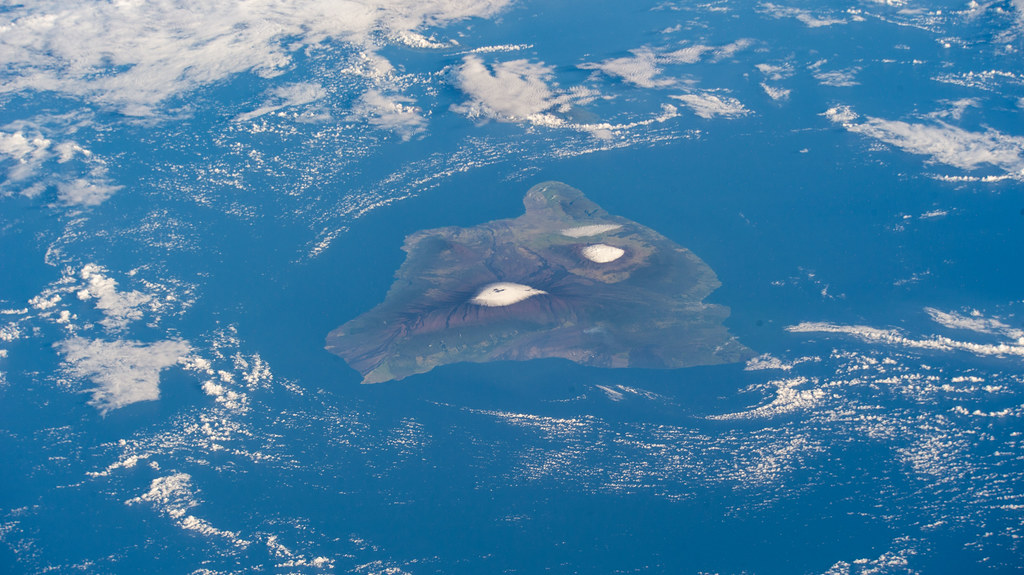#msfc
Text

"This photograph shows F-1 engines being stored in the F-1 Engine Preparation Shop, building 4666, at the Marshall Space Flight Center. Each F-1 engine produced a thrust of 1,500,000 pounds. A cluster of five engines was mounted on the thrust structure of the S-IC stage of a 364-foot long Saturn V launch vehicle that ultimately took astronauts to the Moon."
Date: March 1965
NASA ID: 6521185
#Rocketdyne F-1#F-1#Rocket Engine#NASA#Apollo Program#Marshall Space Flight Center#MSFC#Huntsville#Alabama#March#1965#my post
105 notes
·
View notes
Text

#IFTTT#Flickr#nasa#nasasmarshallspaceflightcenter#nasamarshall#marshall#msfc#solarsystembeyond#astronomy#astrophysics#chandraxrayobservatory#ixpe#imagingxraypolarimetryexplorer#quasar#blackhole
106 notes
·
View notes
Video
Hubble Uncovers a Celestial Fossil by NASA's Marshall Space Flight Center
Via Flickr:
This densely populated group of stars is the globular cluster NGC 1841, which is part of the Large Magellanic Cloud (LMC), a satellite galaxy of our Milky Way galaxy that lies about 162,000 light-years away. Satellite galaxies are bound by gravity in orbits around a more massive host galaxy. We typically think of the Andromeda Galaxy as our galaxy’s nearest galactic companion, but it is more accurate to say that Andromeda is the nearest galaxy that is not in orbit around the Milky Way galaxy. In fact, dozens of satellite galaxies orbit our galaxy and they are far closer than Andromeda. The largest and brightest of these is the LMC, which is easily visible to the unaided eye from the southern hemisphere under dark sky conditions away from light pollution. The LMC is home to many globular clusters. These celestial bodies fall somewhere between open clusters – which are much less dense and tightly bound – and small, compact galaxies. Increasingly sophisticated observations reveal the stellar populations and characteristics of globular clusters are varied and complex, and we have yet to fully understand how these tightly packed groups of stars form. However, there are certain consistencies across all globular clusters: they are very stable and hold their shape for a long time, which means they are generally very old and contain large numbers of very old stars. Globular clusters are akin to celestial ‘fossils.’ Just as fossils provide insight into the early development of life on Earth, globular clusters such as NGC 1841 can provide insights into very early star formation in galaxies. Credit: ESA/Hubble & NASA, A. Sarajedini #NASA #NASAGoddard #NASAMarshall #NASAGoddard #HubbleSpaceTelescope #HST #ESA #globularcluster Read more Read more about NASA’s Hubble Space Telescope NASA Media Usage Guidelines
#NASA#Goddard Space Flight Center#GSFC#Solar System & Beyond#ESA#European Space Agency#universe#space#astronomy#Marshall Space Flight Center#MSFC#Hubble Space Telescope#HST#Hubble#globular cluster#NGC 1841#star cluster#globular star cluster#stars#Watch
20 notes
·
View notes
Text


new haircut ☀️
#probably deleting these later but since i will most likely nvr style my hair like this i wanted to share#if only for a while you know#not because i don't like it but i don't have the skill my hair stylist does#she spoils me tbh but she always does my hair the best and i love her for it❤️#msfc
7 notes
·
View notes
Text

#IFTTT#Flickr#nasa#marshallspaceflightcenter#msfc#rocket#space#artemis#spacelaunchsystem#moon2mars#rocketengine#orion
7 notes
·
View notes
Photo

Flame in Microgravity by NASA's Marshall Space Flight Center https://flic.kr/p/2ojQMcd
2 notes
·
View notes
Video
The Big Island of Hawaii by NASA's Marshall Space Flight Center
Via Flickr:
The big island of Hawaii and its two snow-capped volcanos, (from left) the active Mauna Loa and the dormant Mauna Kea, are pictured from the International Space Station as it orbited 260 miles above the Pacific Ocean. Image Credit: NASA #NASA #NASAMarshall #ISS #InternationalSpaceStation Read more More about the International Space Station NASA Media Usage Guidelines
2 notes
·
View notes
Video
Stellar Snowflake Cluster by NASA's Marshall Space Flight Center
Via Flickr:
From all of us here at Marshall Space Flight Center, we wish you a healthy and happy holiday season! Celebrate with a stellar snowflake that sits within the cosmic Christmas Tree Cluster! Image Credit: NASA/JPL-Caltech/CfA #NASA #NASAMarshall #JPL #JetPropulsionLaboratory #SpitzerSpaceTelescope #Spitzer #ChristmasTreeCluster Read more More about NASA's Spitzer Space Telescope More about NASA's Wide-field Infrared Survey Explorer NASA Media Usage Guidelines
#NASA#Marshall Space Flight Center#MSFC#JPL#Jet Propulsion Laboratory#Spitzer Space Telescope#Christmas Tree cluster#flickr
3 notes
·
View notes
Video
Making Waves in Open Science: NASA Initiatives Enable Ocean Research by NASA's Marshall Space Flight Center
Via ƒ lick R kalegiro inefect ne0nthc 6VCR
As NASA works to make data and research more meaningful and accessible to diverse public and scientific audiences, the agency’s Transform to Open Science (TOPS) program is supporting open science efforts and programs across a variety of scientific disciplines, including climate science and physical oceanography. By leveraging open science principles, NASA encourages and empowers scientists to address critical issues such as melting polar sea ice, rising sea levels, and the overall health of marine ecosystems. The goal of open science is to make NASA research and data more collaborative, accessible, inclusive, and transparent for everyone from the scientist and student to the city manager and citizen. As part of the Open Source Science Initiative, the TOPS team is committed to providing space for everyone in the scientific community to learn about the variety of open science tools and data available, as well as the importance of open science itself. Among the communities that have embraced open science is a NASA-funded consortium called Estimating the Circulation and Climate of the Ocean (ECCO). For more than 20 years, ECCO has been producing models of ocean variables such as sea surface height, sea surface temperature, global mean sea level, sea ice concentration, and ocean bottom pressure. For example, tidal currents often exhibit laminar flow characteristics, visible in the upper left and right corners of the image. This scene was collected by NASA’s Landsat 8 satellite on September 24, 2021. Image Credit: NASA #NASAMarshall #TOPS #TransformtoOpenScience #OpenScience #ocean #landsat Read more NASA Media Usage Guidelines
0 notes
Text

"Engineers at the Marshall Space Flight Center install the F-1 engines on the S-IC stage thrust structure at the S-IC static test stand. Engines are installed on the stage after it has been placed in the test stand. Five F-1 engines, each weighing 10 tons, gave the booster a total thrust of 7,500,000 pounds, roughly equivalent to 160 million horsepower."
Date: March 1, 1965
NASA ID: MSFC-6521876
#Rocketdyne F-1#F-1#Saturn V#Rocket#NASA#Apollo Program#S-IC#Marshall Space Flight Center#MSFC#Huntsville#Alabama#March#1965#my post
53 notes
·
View notes
Text

#IFTTT#Flickr#nasa#marshallspaceflightcenter#msfc#rocket#space#artemis#spacelaunchsystem#moon2mars#michoudassemblyfacility#artemisiii
52 notes
·
View notes
Video
NASA’s Juno Exploring Jovian Moons During Extended Mission by NASA's Marshall Space Flight Center
Via Flickr:
After revealing a trove of details about the moons Ganymede and Europa, the mission to Jupiter is setting its sights on sister moon Io. NASA’s Juno mission is scheduled to obtain images of the Jovian moon Io on Dec. 15 as part of its continuing exploration of Jupiter’s inner moons. Now in the second year of its extended mission to investigate the interior of Jupiter, the solar-powered spacecraft performed a close flyby of Ganymede in 2021 and of Europa earlier this year. In this image, the volcano-laced surface of Jupiter’s moon Io was captured in infrared by the Juno spacecraft’s Jovian Infrared Auroral Mapper (JIRAM) imager as it flew by at a distance of was about 50,000 miles (80,000 kilometers) on July 5, 2022. Brighter spots indicate higher temperatures in this image. Image credit: NASA/JPL-Caltech/SwRI/ASI/INAF/JIRAM #NASA #MarshallSpaceFlightCenter #MSFC #Marshall #jpl #jetpropulsionlaboratory #nasamarshall #juno #nasajuno #Io Read more More about Juno NASA Media Usage Guidelines
#NASA#Marshall Space Flight Center#MSFC#Jet Propulsion Laboratory#JPL#Solar system and beyond#Juno#Jupiter#Space#planets#Io#flickr
1 note
·
View note
Text

#IFTTT#Flickr#nasa#marshallspaceflightcenter#msfc#rocket#space#artemis#spacelaunchsystem#moon2mars#rocketengine
0 notes
Text




felt really pretty yesterday ❤️
#its not obvious in these pics bit i'm so proud of myself i did a thing with my eyeshadow i thought i'd never be able to do!!!#msfc
1 note
·
View note
Photo

NASA’s Juno Mission Marks 50 Orbits Around Jupiter by NASA's Marshall Space Flight Center https://flic.kr/p/2otudmP
5 notes
·
View notes
Video
Cays of the Bahamas by NASA's Marshall Space Flight Center
Via Flickr:
(From left) Culmer's Cay, Glass Cay, Tommy Young's Cay, Davy Cay, Hog Cay, and Green Turtle Cay—islands off the mainland Great Abaco in the Bahamas— appear like jigsaw puzzle pieces as the bright teals and blues of the Atlantic Ocean flow and swirl between the land. The International Space Station orbited 259 miles above as this photograph was taken. Image Credit: NASA #NASA #NASAMarshall #ISS #InternationalSpaceStation #Earth #bahamas Read more More about the International Space Station NASA Media Usage Guidelines
1 note
·
View note



